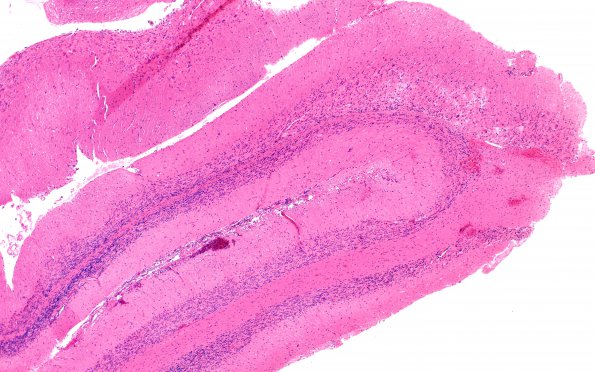Table of Contents
Washington University Experience | NEOPLASMS (NEURONAL) | Lhermitte-Duclos Disease | 1D1 Lhermitte-Duclos Dz (Case 1) H&E 4X 2
Focally, the normal microscopic architecture of the cerebellar architecture appears to be relatively well-preserved with normal arrangement of molecular and granular layers. However, in most places the foliar architecture, although present, is rather abnormal due to expansion of the granule cell layer by an abnormal collection of ganglionic cells that are variable in size as well as shape. This dysplastic and dysmorphic neurocytic and ganglionic cell population is seen replacing the internal granular layer in several areas. Binucleate and multinucleate forms are easily identified, as are the abnormal perikarya and Nissl substance. There is also focal presence of thin capillary-sized vasculature, patchy robust perivascular dystrophic calcifications, and vacuolation. A few dysmorphic ganglion cells are also appreciated in the molecular layer.

